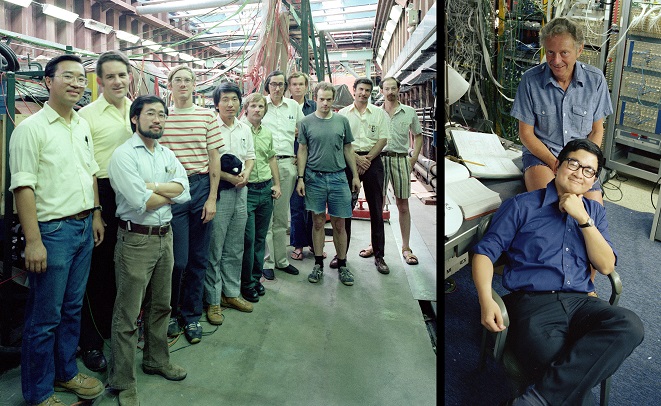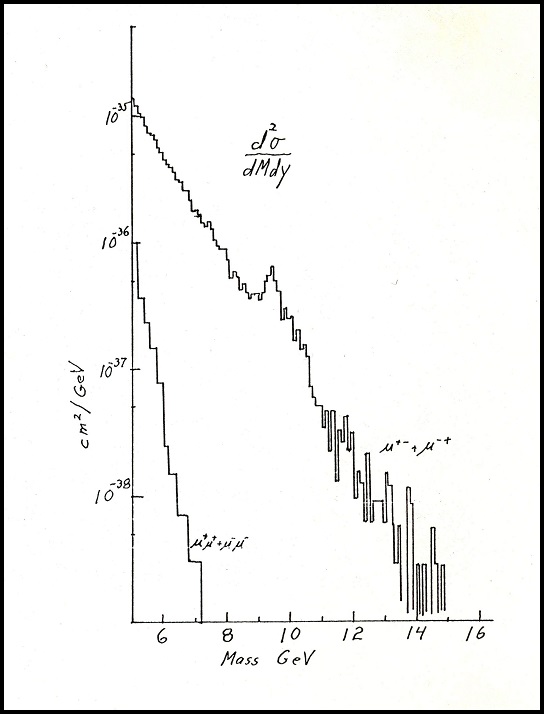July 1, 1977: Discovery of the bottom quark
(You can also view the original July 1, 2014 Fermilab Today article)
Thirty-seven years ago today, Physical Review Letters received the paper "Observation of a Dimuon Resonance at 9.5 GeV in 400-GeV Proton-Nucleus Collisions," which presented the findings of E288, an experiment in the proton fixed target area led by Leon M. Lederman and made up of scientists from Columbia, Fermilab, and the State University of New York at Stony Brook. The experiment sought to study the rare events that occur when a proton beam collides with a platinum target, producing a pair of muons or electrons. The experimenters observed a bump in the number of events at 9.5 GeV, indicating the existence of the upsilon particle, which was later understood to be the bound state of the bottom quark and its antiquark.
The experiment began with a proposal for E70, which was submitted on June 17, 1970. The third phase of E70 ultimately became E288. The experimenters began taking data for E288 on May 15, 1977. A fire in the Proton Center pit on May 22 briefly delayed the experiment, but they were able to resume operations on May 27. By June 15, the experimenters were confident in their results, and Steve Herb announced the discovery at a June 30 seminar in the Fermilab Auditorium. Experimenters at Fermilab would go on to discover its partner the top quark in 1995.
The E288 experimenters included J. A. Appel, B. C. Brown, C. N. Brown, W. R. Innes, K. Ueno, and T. Yamanouchi from Fermilab, S. W. Herb, D. C. Hom, L. M. Lederman, J. C. Sens, H. D. Snyder, and J. K. Yoh from Columbia University, and A. S. Ito, H. Jostlein, D. M. Kaplan, and R. D. Kephart from Stony Brook.
The Fermilab Archives contains extensive records of the discovery. You can read more about the discovery of the bottom quark at the Fermilab History and Archives Project webpage devoted to the event, which includes a special edition of the Village Crier from the summer of 1977 announcing the discovery, internal notes of the collaboration provided by John Yoh, and many other materials.




